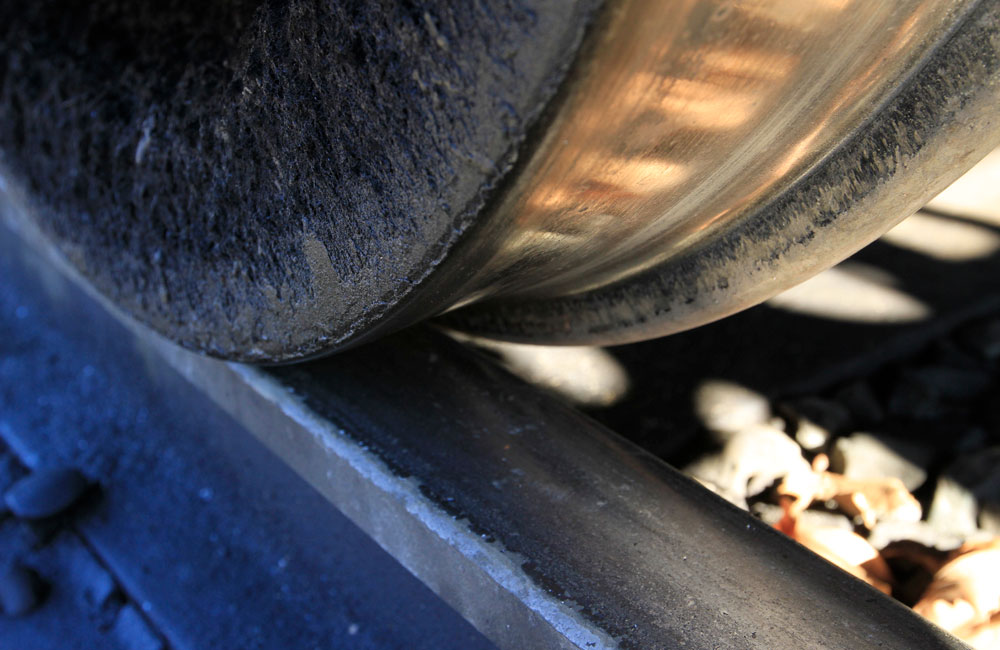
Q: Is there a relatively simple answer to the question as to why you find the wheel flanges on the inside rather than the outside of the rail on railroad engines and cars? – Gerald Roberts
A: Who knows what thought went into that decision way back when. The real answer might come down to “because that’s how it’s always been done.” But I can think of a few reasons that decision makes good sense.
First of all, train wheels are fixed to solid axles. Unlike an automobile’s differential, the wheels on both sides of a train car’s axles have to rotate at the same rate. So when those wheels hit a curve, the inner wheel is traveling a shorter distance than the outer wheel. To make this work without a whole lot of skidding and wheel wear, the tread of a train wheel is not a cylinder, but a section of a cone that’s narrower on the outside of the wheel. That means that as the rails start to curve, the inner rail bends away from the wheel, riding on a part of the wheel that’s a smaller diameter than the outer wheel. The opposite happens on the outer rail, bending toward the larger diameter inner tread. (The difference in diameters between the inner and outer tread isn’t much, but then again, track curves are very gradual.) If the flange were attached to the narrow outside of the wheels, casting the wheels would be more difficult, requiring a more than two-part mold.
Another reason that comes to mind is that with the flanges on the inside of the rail, the forces of the rails pushing against those flanges push the wheels onto the axles. If the flanges were on the outside, rail pressure on those flanges would try to push the wheels off the axles – a safety hazard.
Finally, turnout engineering would be very tricky. The frog of a typical turnout has intersecting flangeways where one route’s right rail crosses the other route’s left rail. With the flanges on the inside, those flangeways intersect where the diverging route’s outer rail has already curved a considerable amount toward the main route’s inner rail. This minimizes the gap in the rail necessary for the other route’s flangeway. But if the flanges were on the outside of the wheels, the flanges would have to cross the other route’s rail where the curve begins and the angle between the two routes is near zero. Either the switch points would have to be on the outside of the stock rails, or we’d have to use stub switches that shift both entire rails between two routes.
Send us your questions
Have a question about modeling, operation, or prototype railroads? Send it to us at AskTrains@Trains.com. Be sure to put “Ask MR” in the subject.














Another reason would be the centrifugal force exerted on turns. The inside wheel would tend to lift up while the wait shifts the outside wheel. With a flange on the outside and a poor contact on the inside….well you get it.